This article is part of our MLB Barometer series.
Happy Opening Day eve eve eve! That may not yet be an official national holiday, but there's a definite sense of excitement at the moment. The weather is warming up, the Suez Canal is clear, and the world is starting to return to normal, as more and more COVID-19 vaccines become available. More importantly than all of those, of course, is that we're set for the first April MLB games since 2019.
For those procrastinators who wait to hold their drafts until the last possible moment (or for those who have been drafting two or three times a week since early February), drafting becomes a different game than it's been for most of the offseason. Early drafts add additional injury risk – just ask those who selected Eloy Jimenez or Kirby Yates – though of course even drafting the night before Opening Day can't help you when your top starter blows out his elbow in April, so that begins to even out quickly.
The main difference with late drafts is that the guesswork regarding who will make the team and what role they'll fill is almost completely gone. That mainly affects the late rounds, as you can throw more informed late-round darts at pitchers who will actually be in the rotation, for example, while it also has significant implications for the closer market. I recommend a quick scan of my latest Spring Training Job Battles update from Saturday if you want to get up to speed on the latest developments
Happy Opening Day eve eve eve! That may not yet be an official national holiday, but there's a definite sense of excitement at the moment. The weather is warming up, the Suez Canal is clear, and the world is starting to return to normal, as more and more COVID-19 vaccines become available. More importantly than all of those, of course, is that we're set for the first April MLB games since 2019.
For those procrastinators who wait to hold their drafts until the last possible moment (or for those who have been drafting two or three times a week since early February), drafting becomes a different game than it's been for most of the offseason. Early drafts add additional injury risk – just ask those who selected Eloy Jimenez or Kirby Yates – though of course even drafting the night before Opening Day can't help you when your top starter blows out his elbow in April, so that begins to even out quickly.
The main difference with late drafts is that the guesswork regarding who will make the team and what role they'll fill is almost completely gone. That mainly affects the late rounds, as you can throw more informed late-round darts at pitchers who will actually be in the rotation, for example, while it also has significant implications for the closer market. I recommend a quick scan of my latest Spring Training Job Battles update from Saturday if you want to get up to speed on the latest developments prior to your draft, though things move so quickly this time of year that some of the information there is already outdated. You can also find all the latest news in one place here if you don't spend all day refreshing Twitter and want to catch up on anything you've missed.
This week's risers and fallers will contain mostly players who have won or lost roster spots or fantasy-relevant roles. With so much optimism in the air, this will be the most positive Barometer than I can remember, with seven risers to go with three fallers. At least, we'll say that it's the positivity, or the fact that you don't need a full paragraph to tell you Eloy Jimenez' nearly season-ending shoulder injury does, in fact, hurt his fantasy value, and not the fact I had to tear up a section on Matt Barnes as a faller after his coronavirus diagnosis was ruled a false positive.
RISERS
 Jordan Romano, RP, Blue Jays: Romano was already an interesting setup man earlier in the offseason, as Kirby Yates seemingly couldn't be trusted to stay healthy. As it turns out, Yates couldn't even last until Opening Day, as he underwent Tommy John surgery Wednesday. Romano had an NFBC of 457.0 from January 19 (the day Yates signed) through March 20 (the day before Yates' injury was announced); since March 21, that's jumped all the way up to 215.4. Romano looked very much like a closer last season despite recording just two saves, as he backed up his 1.23 ERA with a 36.8 percent strikeout rate and a 58.1 percent groundball rate. With upper-90s heat and a slider that he threw 60 percent of the time at an average of 89.4 mph, the stuff passes the eye test as well, suggesting Romano could well end the year among the best closers in the league. There are reasons to not get too far ahead ourselves, however. Romano has been an elite reliever for less than 15 innings, and Rafael Dolis was similarly effective last season, saving five games with a 1.50 ERA and 31.0 percent strikeout rate. As of this writing, the Blue Jays haven't officially named Romano the closer ahead of Dolis, so the gap of more than 350 points between their respective ADPs over the past week is surely far too high. Dolis is currently dealing with back spasms, which could make Romano the closer by default, though the issue doesn't seem particularly serious.
Jordan Romano, RP, Blue Jays: Romano was already an interesting setup man earlier in the offseason, as Kirby Yates seemingly couldn't be trusted to stay healthy. As it turns out, Yates couldn't even last until Opening Day, as he underwent Tommy John surgery Wednesday. Romano had an NFBC of 457.0 from January 19 (the day Yates signed) through March 20 (the day before Yates' injury was announced); since March 21, that's jumped all the way up to 215.4. Romano looked very much like a closer last season despite recording just two saves, as he backed up his 1.23 ERA with a 36.8 percent strikeout rate and a 58.1 percent groundball rate. With upper-90s heat and a slider that he threw 60 percent of the time at an average of 89.4 mph, the stuff passes the eye test as well, suggesting Romano could well end the year among the best closers in the league. There are reasons to not get too far ahead ourselves, however. Romano has been an elite reliever for less than 15 innings, and Rafael Dolis was similarly effective last season, saving five games with a 1.50 ERA and 31.0 percent strikeout rate. As of this writing, the Blue Jays haven't officially named Romano the closer ahead of Dolis, so the gap of more than 350 points between their respective ADPs over the past week is surely far too high. Dolis is currently dealing with back spasms, which could make Romano the closer by default, though the issue doesn't seem particularly serious.
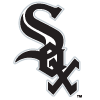 Andrew Vaughn, 1B, White Sox: Vaughn looked like one of the more interesting rookies to draft for most of the winter, but, as with nearly every prospect these days, it wasn't completely certain he'd break camp in the big leagues. Any doubts in that area have seemingly dissipated in the past few days following Eloy Jimenez' ruptured pectoral tendon, an injury that's expected to keep him out for nearly all of the regular season. That seemingly means the White Sox need Vaughn's bat in the lineup and, strangely enough, they also apparently need his glove in left field. It's an odd decision for a player who has strictly played first base as a professional and wasn't considered a particularly strong defender even at that position, but the White Sox are at least acting as if they're convinced he can handle it. That brings the upside of additional positional eligibility, though it's possible spending time learning the position hurts Vaughn slightly at the plate. He's still a risky choice given that he's yet to play a game above the High-A level, but scouts love his bat, and the White Sox loved him enough to take him third-overall in 2019, so the pedigree is certainly there. You'll have to ignore some very discouraging projections to take him (even the most optimistic have him as a below-average hitter), but it's believable that projections would be ill-equipped to handle a player with such a limited professional track record due to the canceled minor-league season.
Andrew Vaughn, 1B, White Sox: Vaughn looked like one of the more interesting rookies to draft for most of the winter, but, as with nearly every prospect these days, it wasn't completely certain he'd break camp in the big leagues. Any doubts in that area have seemingly dissipated in the past few days following Eloy Jimenez' ruptured pectoral tendon, an injury that's expected to keep him out for nearly all of the regular season. That seemingly means the White Sox need Vaughn's bat in the lineup and, strangely enough, they also apparently need his glove in left field. It's an odd decision for a player who has strictly played first base as a professional and wasn't considered a particularly strong defender even at that position, but the White Sox are at least acting as if they're convinced he can handle it. That brings the upside of additional positional eligibility, though it's possible spending time learning the position hurts Vaughn slightly at the plate. He's still a risky choice given that he's yet to play a game above the High-A level, but scouts love his bat, and the White Sox loved him enough to take him third-overall in 2019, so the pedigree is certainly there. You'll have to ignore some very discouraging projections to take him (even the most optimistic have him as a below-average hitter), but it's believable that projections would be ill-equipped to handle a player with such a limited professional track record due to the canceled minor-league season.
 Alejandro Kirk, C, Blue Jays: Kirk was among the players whose Opening Day roster status fantasy drafters were tracking most closely, as he has a far more exciting bat than Danny Jansen, a career .208/.297/.370 hitter who failed to reach the Mendoza Line last season. It wasn't entirely clear Kirk would break camp in the big leagues, as he only has nine games of major-league experience under his belt after jumping straight from High-A last season. He's not a strong defender behind the plate, so the excuse of sending him to the minors to "work on his defense" would actually be believable in his case. As it turns out, the Blue Jays value his bat highly enough that they'll keep him around to start the year. He may still see less than half the starts behind the plate early on, but he's the rare catcher whose bat could be strong enough to earn a decent number of opportunities at the designated hitter spot, as he's a career .315/.418/.500 hitter in the minors, striking out just 9.7 percent of the time to go with a 14.4 percent strikeout rate. Toronto has a crowded roster, but Kirk could have a path to more at-bats early on if George Springer's oblique issue sidelines him to start the year.
Alejandro Kirk, C, Blue Jays: Kirk was among the players whose Opening Day roster status fantasy drafters were tracking most closely, as he has a far more exciting bat than Danny Jansen, a career .208/.297/.370 hitter who failed to reach the Mendoza Line last season. It wasn't entirely clear Kirk would break camp in the big leagues, as he only has nine games of major-league experience under his belt after jumping straight from High-A last season. He's not a strong defender behind the plate, so the excuse of sending him to the minors to "work on his defense" would actually be believable in his case. As it turns out, the Blue Jays value his bat highly enough that they'll keep him around to start the year. He may still see less than half the starts behind the plate early on, but he's the rare catcher whose bat could be strong enough to earn a decent number of opportunities at the designated hitter spot, as he's a career .315/.418/.500 hitter in the minors, striking out just 9.7 percent of the time to go with a 14.4 percent strikeout rate. Toronto has a crowded roster, but Kirk could have a path to more at-bats early on if George Springer's oblique issue sidelines him to start the year.
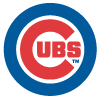 Adbert Alzolay, SP, Cubs: Alzolay showed his considerable potential last season in four starts and two relief appearances, cruising to a 2.95 ERA and a 33.3 percent strikeout rate. He did have control problems, which fits with his scouting report, walking 14.9 percent of opposing batters, but that's exactly the sort of pitcher who makes for a late-round lottery ticket, as he would return fair value if all he did was strike out batters and could be a steal if his control took a step forward. That would have required a roster spot, though, and it was looking increasingly unlikely throughout March that he'd actually win one, especially after reports came out that he'd been granted an additional option. His ADP actually jumped up to 532.4 over the past two weeks after it came in at 427.8 through March 14. While the Cubs will likely use that option at some point, as they've talked about rotation players through the back end of their rotation to save their innings, the team somewhat surprisingly named him its fifth starter to open the year, beating out Alec Mills. You may not be able to keep Alzolay on your roster all year, but he's back as a high-upside late-round option after looking potentially undraftable for a brief period.
Adbert Alzolay, SP, Cubs: Alzolay showed his considerable potential last season in four starts and two relief appearances, cruising to a 2.95 ERA and a 33.3 percent strikeout rate. He did have control problems, which fits with his scouting report, walking 14.9 percent of opposing batters, but that's exactly the sort of pitcher who makes for a late-round lottery ticket, as he would return fair value if all he did was strike out batters and could be a steal if his control took a step forward. That would have required a roster spot, though, and it was looking increasingly unlikely throughout March that he'd actually win one, especially after reports came out that he'd been granted an additional option. His ADP actually jumped up to 532.4 over the past two weeks after it came in at 427.8 through March 14. While the Cubs will likely use that option at some point, as they've talked about rotation players through the back end of their rotation to save their innings, the team somewhat surprisingly named him its fifth starter to open the year, beating out Alec Mills. You may not be able to keep Alzolay on your roster all year, but he's back as a high-upside late-round option after looking potentially undraftable for a brief period.
 Jazz Chisholm, 2B, Marlins: Chisholm spent the spring battling Isan Diaz for the Marlins' starting job at second base. He wound up scoring a blowout victory, with his .268/.333/.488 line easily beating Diaz's .059/.238/.147 mark. Exactly what can be expected of Chisholm this season is unclear, but he's, at minimum, an interesting late-round option given that he seems to have a steady job. (Jon Berti should spend some time at second base but lines up to play all over the diamond, which shouldn't significantly impact Chisholm's playing time.) Chisholm looked very overmatched in his 21-game debut last season, hitting .161/.242/.321, though that's hardly a surprise given that he was a 22-year-old who'd played just 23 Double-A games and none at the Triple-A level. His bat presumably didn't significantly improve over the winter, but if he hits well enough to stick around, he'll provide fantasy teams with a much-needed burst of speed. He's not elite in that category, though, stealing 21.6 bases per 600 plate appearances over the course of his professional career, so he'll need to do at least something at the plate to be worth starting in most formats.
Jazz Chisholm, 2B, Marlins: Chisholm spent the spring battling Isan Diaz for the Marlins' starting job at second base. He wound up scoring a blowout victory, with his .268/.333/.488 line easily beating Diaz's .059/.238/.147 mark. Exactly what can be expected of Chisholm this season is unclear, but he's, at minimum, an interesting late-round option given that he seems to have a steady job. (Jon Berti should spend some time at second base but lines up to play all over the diamond, which shouldn't significantly impact Chisholm's playing time.) Chisholm looked very overmatched in his 21-game debut last season, hitting .161/.242/.321, though that's hardly a surprise given that he was a 22-year-old who'd played just 23 Double-A games and none at the Triple-A level. His bat presumably didn't significantly improve over the winter, but if he hits well enough to stick around, he'll provide fantasy teams with a much-needed burst of speed. He's not elite in that category, though, stealing 21.6 bases per 600 plate appearances over the course of his professional career, so he'll need to do at least something at the plate to be worth starting in most formats.
 Lucas Sims, RP, Reds: The Reds have declined to name a dedicated closer, though that's not necessarily bad news for Sims. He's been drafted as if he's the clear second choice behind teammate Amir Garrett throughout the winter, going roughly 200 picks after his teammate in NFBC drafts. Both pitchers dealt with injury issues this spring (an elbow for Sims and a forearm for Garrett), but both have since returned to make a handful of spring appearances and are expected to be ready to go to start the year. The Reds hinted at using a modern, leverage-based setup in previous seasons but wound up reverting to using Raisel Iglesias as a traditional ninth-inning man. It seems as though they'll go with that progressive setup this year, however, with Garrett and Sims both seeing save chances. Playing the matchups could work out better for the right-handed Sims than it does for the left-handed Garrett, especially as the Reds are still considering using Sean Doolittle (another lefty) in the ninth inning occasionally despite his poor performances this spring and in the last two seasons.
Lucas Sims, RP, Reds: The Reds have declined to name a dedicated closer, though that's not necessarily bad news for Sims. He's been drafted as if he's the clear second choice behind teammate Amir Garrett throughout the winter, going roughly 200 picks after his teammate in NFBC drafts. Both pitchers dealt with injury issues this spring (an elbow for Sims and a forearm for Garrett), but both have since returned to make a handful of spring appearances and are expected to be ready to go to start the year. The Reds hinted at using a modern, leverage-based setup in previous seasons but wound up reverting to using Raisel Iglesias as a traditional ninth-inning man. It seems as though they'll go with that progressive setup this year, however, with Garrett and Sims both seeing save chances. Playing the matchups could work out better for the right-handed Sims than it does for the left-handed Garrett, especially as the Reds are still considering using Sean Doolittle (another lefty) in the ninth inning occasionally despite his poor performances this spring and in the last two seasons.
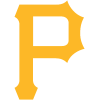 Kevin Newman, 2B/SS, Pirates: Spring stats don't matter. They might matter at least a little bit when they're ridiculously good, however. That certainly describes Newman's Grapefruit League performance, as he was hitting .714/.735/.929 through the end of Sunday's games. Newman entered last season as an interesting late-round, middle-infield option, coming off a season in which he hit .308 with a respectable 12 homers and 16 steals. He was more or less a complete afterthought this winter, though, coming off an awful 2020 that saw him hit .224/281/.276 with one homer and zero steals. If his spring performance is any indication, he could be back to 2019 form this season, making him a potential cross-category contributor. Throw in the fact that he's eligible at both second base and shortstop in most formats, and you get a player who should slot very well into the back of most rosters in deeper leagues. Even if he can't quite replicate his 2019 numbers, his spring showing should earn him everyday at-bats given the Pirates' lack of quality alternatives.
Kevin Newman, 2B/SS, Pirates: Spring stats don't matter. They might matter at least a little bit when they're ridiculously good, however. That certainly describes Newman's Grapefruit League performance, as he was hitting .714/.735/.929 through the end of Sunday's games. Newman entered last season as an interesting late-round, middle-infield option, coming off a season in which he hit .308 with a respectable 12 homers and 16 steals. He was more or less a complete afterthought this winter, though, coming off an awful 2020 that saw him hit .224/281/.276 with one homer and zero steals. If his spring performance is any indication, he could be back to 2019 form this season, making him a potential cross-category contributor. Throw in the fact that he's eligible at both second base and shortstop in most formats, and you get a player who should slot very well into the back of most rosters in deeper leagues. Even if he can't quite replicate his 2019 numbers, his spring showing should earn him everyday at-bats given the Pirates' lack of quality alternatives.
FALLERS
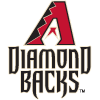 Zac Gallen, SP, Diamondbacks: Gallen got the pro-designated hitter crowd out in force last week, suffering a hairline fracture on his forearm that he first felt while hitting, not throwing. (For some reason, none of the far more numerous pitching-related injuries suffered by pitchers led to calls to replace them all with pitching machines for their own safety.) The exact severity of the injury is unclear, as it's a rather unusual injury. A bone issue is seemingly much less of a worry than a ligament or muscle problem if a pitcher has to be dealing with an arm injury, and the fracture is quite a small one. He's actually able to keep throwing in some capacity, but the Diamondbacks won't want to push him and make the injury worse. The ambiguity doesn't exactly help fantasy drafters, however, as no one wants to be the person who elects not to drop him too far only to find out he'll miss the majority of the season. That's not the default expectation, of course, but it's tough to take a picture currently dealing with an arm issue of any capacity, so he should drop precipitously down draft boards.
Zac Gallen, SP, Diamondbacks: Gallen got the pro-designated hitter crowd out in force last week, suffering a hairline fracture on his forearm that he first felt while hitting, not throwing. (For some reason, none of the far more numerous pitching-related injuries suffered by pitchers led to calls to replace them all with pitching machines for their own safety.) The exact severity of the injury is unclear, as it's a rather unusual injury. A bone issue is seemingly much less of a worry than a ligament or muscle problem if a pitcher has to be dealing with an arm injury, and the fracture is quite a small one. He's actually able to keep throwing in some capacity, but the Diamondbacks won't want to push him and make the injury worse. The ambiguity doesn't exactly help fantasy drafters, however, as no one wants to be the person who elects not to drop him too far only to find out he'll miss the majority of the season. That's not the default expectation, of course, but it's tough to take a picture currently dealing with an arm issue of any capacity, so he should drop precipitously down draft boards.
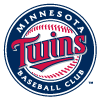 Alex Kirilloff, OF, Twins: Kirilloff was one of the more interesting rookies throughout draft season. Though he's yet to make his regular-season debut, he was included on the Twins' playoff roster last fall, seemingly an indication that the team felt he was ready for the big leagues. While the Twins may have initially planned for him to make the Opening Day roster, he hurt his case with an awful spring, hitting .129/.182/.258 in 12 games. He remains a worthy stash option, especially as Brent Rooker and Jake Cave shouldn't be too hard to displace in left field, but this is a uniquely difficult season for minor-league stashes. With no games happening in April, what can Kirilloff do to prove to the team that he's ready to make the jump? If Kirilloff's demotion were purely a service-time manipulation matter (which it may well be), he could magically become big-league ready in mid-April, but he might need to get hot at Triple-A before earning a promotion. He won't even get the chance to do that until May.
Alex Kirilloff, OF, Twins: Kirilloff was one of the more interesting rookies throughout draft season. Though he's yet to make his regular-season debut, he was included on the Twins' playoff roster last fall, seemingly an indication that the team felt he was ready for the big leagues. While the Twins may have initially planned for him to make the Opening Day roster, he hurt his case with an awful spring, hitting .129/.182/.258 in 12 games. He remains a worthy stash option, especially as Brent Rooker and Jake Cave shouldn't be too hard to displace in left field, but this is a uniquely difficult season for minor-league stashes. With no games happening in April, what can Kirilloff do to prove to the team that he's ready to make the jump? If Kirilloff's demotion were purely a service-time manipulation matter (which it may well be), he could magically become big-league ready in mid-April, but he might need to get hot at Triple-A before earning a promotion. He won't even get the chance to do that until May.
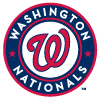 Carter Kieboom, 3B, Nationals: The Nationals clearly wanted Kieboom to be their starting third baseman this season. They mentioned as much on multiple occasions over the winter and didn't bring in any alternatives to compete with him. He did what he could to improve himself over the offseason, altering his batting stance and undergoing LASIK surgery. Those changes failed to have anything close to the desired effect, however, as he was optioned Saturday following a spring in which he hit a miserable .133/.204/.222 in 49 trips to the plate. That leaves some combination of very low-ceiling veterans like Josh Harrison, Jordy Mercer and Hernan Perez likely to pick up starts in his absence. It's still far too early to write off the 23-year-old completely, but his once fairly substantial potential has seemingly taken a significant hit, as he's done nothing to suggest his .181/.309/.222 line through his first 44 big-league games is a fluke. He'll likely return at some point this season if he gets his bat going in the minors, but it will be hard to get excited about him when he arrives.
Carter Kieboom, 3B, Nationals: The Nationals clearly wanted Kieboom to be their starting third baseman this season. They mentioned as much on multiple occasions over the winter and didn't bring in any alternatives to compete with him. He did what he could to improve himself over the offseason, altering his batting stance and undergoing LASIK surgery. Those changes failed to have anything close to the desired effect, however, as he was optioned Saturday following a spring in which he hit a miserable .133/.204/.222 in 49 trips to the plate. That leaves some combination of very low-ceiling veterans like Josh Harrison, Jordy Mercer and Hernan Perez likely to pick up starts in his absence. It's still far too early to write off the 23-year-old completely, but his once fairly substantial potential has seemingly taken a significant hit, as he's done nothing to suggest his .181/.309/.222 line through his first 44 big-league games is a fluke. He'll likely return at some point this season if he gets his bat going in the minors, but it will be hard to get excited about him when he arrives.










